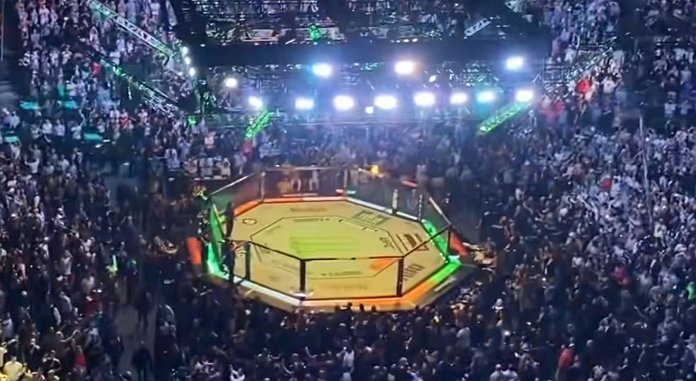
Former UFC fighter Frank Mir has expressed his frustration over being underpaid for his fight with Brock Lesnar at UFC 100 in 2009, comparing it to the much higher earnings of boxers Deontay Wilder and Tyson Fury, and highlighting the lack of competing promoters in MMA as a key issue.
Frank Mir, the former UFC champ, has some grievances. He’s not trying to play the sore loser, but he’s got some questions. Who really pocketed the big bucks from UFC’s most successful cards? ‘Cause it sure wasn’t him.
UFC 100 was a big deal back in 2009. It was a historic event, pitting Mir against Brock Lesnar, the WWE superstar turned fighter. The event sold a whopping 1.6 million pay-per-views. At $44.95 a pop, that’s over $71 million in revenue.
But here’s the catch. Back then, UFC shared pay-per-view profits with cable and satellite companies. That usually meant halving the revenue. So, UFC 100 probably earned around $35 or $36 million. The publicly available salaries showed Mir made $45,000 for his loss, while Lesnar pocketed $400,000. And that’s before factoring in pay-per-view sales.
Mir’s bonus didn’t push his earnings to $1 million for the fight with Lesnar. Or any other fight in his 15-year career with UFC. It took him years to realize how underpaid he was compared to UFC’s profits.
The realization hit him during the Deontay Wilder rematch with Tyson Fury. Mir and Brock’s fight had more buys, but the pay-per-view cost was higher. So where did all the money go?
Fury and Wilder made a combined $40 million. Mir was shocked. Lesnar made seven figures, around $2.5 million. But Mir didn’t even make a million.
The Fury vs. Wilder 2 card in 2020 sold between 800,000 and 850,000 buys at $79.99 each. That’s roughly $66 million. Both Fury and Wilder were guaranteed more than $25 million, plus a share of the pay-per-view profits.
That’s a lot more than Mir took home from a UFC card that sold 1.6 million buys. He even thinks Lesnar deserved more than his $2.5 million.
“Brock, a much bigger superstar than Fury or Wilder,” Mir said. “Why wasn’t he making $20 million? That’s mind-boggling. Until Conor McGregor, we held the record for most pay-per-view buys.”
Mir regrets his poor understanding of the money he made compared to UFC’s profits. Years later, he realizes he should have been making much more. It was a costly lesson.
“I didn’t know better,” Mir admitted. “A pay-per-view buy is a pay-per-view buy. Why is this sport paying their athletes this percentage versus that one? Boxing and MMA are similar. The costs aren’t different.”
The difference? Competing promoters. In UFC, there’s only one promoter. In MMA, the show is the promoter. It’s not like a Bellator fighter and a UFC fighter are on the same card. They both understand the revenue models. They’re not ignorant.
UFC pay continues to be a hot topic. Mir admits athletes are making more money now than 15 years ago. That’s the only thing that eases his mind about his daughter Bella following in his footsteps.
“I’m not as uneasy about it,” Mir said. “Before, I didn’t know many people who did MMA and didn’t have to do something afterward. Now, she can make a career and a living off it. It makes the pill easier to swallow.”
“As a father, I’m relieved she’ll be a millionaire at least. I’m not as scared about it as I was before. There’s the risk of injury, and you’re not pursuing other endeavors that could take care of you financially. You’re sacrificing that for this fight career. But now, not so much. It’s a better world now than when I was there.”